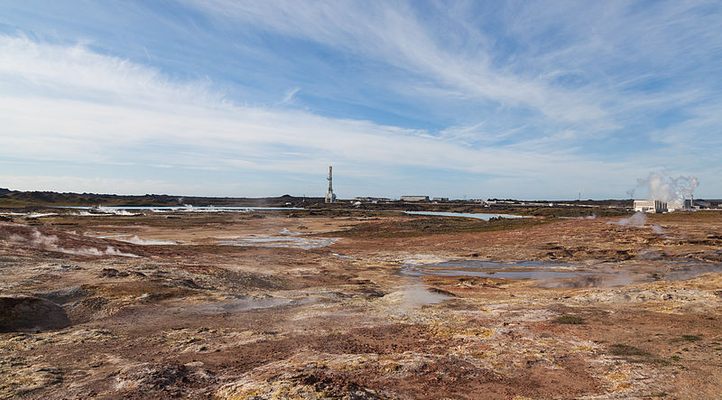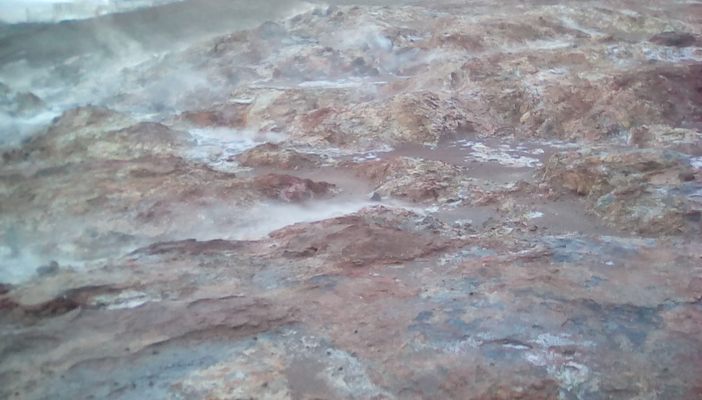About
Iceland is a cap atop a brewing geothermal field, the place where hot gases bubble out from deep within the earth through fissures in its tectonic plates. This phenomenon created the country's famous geysers and hot springs, the largest of which is Gunnuhver.
Gunnuhver measures 65 feet across and is constantly spewing dense, cloudy steam at a scalding 570˚F. It is unique from Iceland's other hot springs in that it is entirely seawater, due to its proximity to the ocean. The surrounding rocks are impressive as well, colored dazzling oranges and blues from unusual minerals. But its natural majesty isn't the only reason Gunnuhver is famous. It has a ghost story as well, which gave the hot spring its name.
The legend goes that an old woman named Gudrun, "Gunna" for short, lived in a small community on the Reykjanes peninsula sometime in the 18th century. She was largely disliked, and was suspected of being a witch because there was always something brewing in her pot. Shortly before her death, a judge paid Gunn a visit and ended up in a dispute with her. That same judge attended Gunn's funeral and was discovered dead the next morning, his body bruised and mutilated.
The old woman's ghost was to blame, and she didn't stop there. Her spirit terrorized the peninsula, wreaking mayhem. It wasn't until the locals plied a priest with liquor that they found a solution to trap Gudrun. Per the priest's advice, they left a loose end from a ball of twine for the ghost to grab hold of. She did, and the ball rolled into the hot spring, taking the witch's ghost with it and trapping her there forever.
The hot spring takes its name from the old woman (Gunnuhver translates to "Gunn's hot spring"). Some say that Gudrun's ghost didn't fall into the boiling pit, but that she's hanging on to the edge for all eternity. The steam is constant and thick enough that it would certainly obscure any ghostly figures in or outside Gunnuhver.
Visitors can view the hot spring from several wooden observation platforms nearby. Gunnuhver was entirely closed to the public in 2006 when the spring became more active and expanded, consuming a portion of the platforms. Today the hot spring's activity has decreased, and Gunnuhver is supposedly safe for the time being. But it can be hard to tell when Gudrun will climb from the spring again.
Related Tags
Know Before You Go
As you drive west from Grindavik the coast road turns to the north and passes a large geothermal plant. Take the first left after the plant and then the first left again. You will reach a T junction with the Reykjanesviti lighthouse easily visible on top of a hill to your right. Turn left into the parking area. Take care in winter, the boardwalks get very icy.
Community Contributors
Added By
Published
March 15, 2017
Sources
- Reykjanes Peninsular The Oficial Tourist Guide pub. Reykjanes Marketing Office 2016
- https://hiticeland.com/photos%20from%20iceland/reykjanes/gunnuhver
- http://www.wondermondo.com/Countries/E/Iceland/Sudurnes/Gunnuhver.htm
- http://unlockingkiki.com/steamy-weekend-iceland-gunnuhver-geothermal-area/
- http://www.reykjavik.com/gunnuhver-geothermal-field-ghost-story/
- https://www.icelandtravel.is/about-iceland/destination-guide/reykjanes/detail/item348946/Gunnuhver
- https://www.visitreykjanes.is/en/travel/places/nature/gunnuhver























































